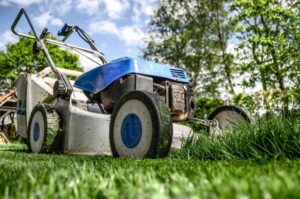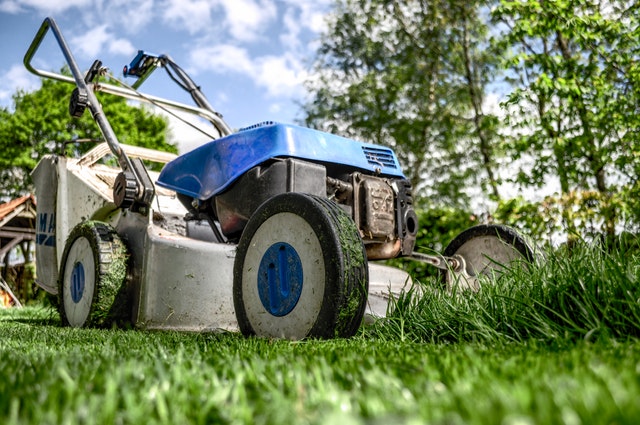Or Mow Less, Sustainably
 For some, mowing is the bane of summer; a choking, chugging chore to abhor. For others, it’s an artistic expression—the chance to maintain and admire a property’s carefully crafted aesthetic look while logging some laps around the lawn. Whether we enjoy it or prefer leaving the task to someone else, several considerations can make the experience less laborious, less polluting and even lighter on the budget as fuel prices rise.
For some, mowing is the bane of summer; a choking, chugging chore to abhor. For others, it’s an artistic expression—the chance to maintain and admire a property’s carefully crafted aesthetic look while logging some laps around the lawn. Whether we enjoy it or prefer leaving the task to someone else, several considerations can make the experience less laborious, less polluting and even lighter on the budget as fuel prices rise.
Start high and stay high. Resist the temptation to mow the family lawn to resemble a closely shaved golf green. Far better results are achieved by adjusting the machine’s blade to the top setting and leaving it there until after Labor Day. Taller grass in the spring shades the surface of the soil, so that crabgrass and other weed seeds can’t sprout as much. High levels in the summer conserve moisture and encourage deep root growth, so that the lawn becomes more drought-tolerant.
The fastest way to harm a lawn is by mowing too low—less than three inches for most grass species. Exceptions are Bermuda grass or seashore paspalum in the South, or bent grass in the North, all of which do best when mowed at one to two inches high.
Fertilize naturally. Organic fertilizers derived from plant or animal byproducts work with the soil’s biology to feed the lawn slowly and evenly. Leave the grass clippings on the lawn, which quickly biodegrade to provide more free, natural lawn food.
The natural approach to nourishing a lawn requires less frequent mowing and makes it more adaptable to long dry spells. Synthetic chemical fertilizers, which are formulated to stimulate a lot of growth quickly, are designed to demand more mowing and watering.
Get grass off of gas. If a lawn is a third of an acre (15,000 square feet) or less, consider this: Today’s “push” or motorless mowers are not our grandfathers’ heavy wood and steel models. Manufactured from high-grade plastics, lightweight metals and precision blades that rarely need sharpening, the modern mowers cut grass cleanly and are a breeze to use. They are the healthiest choice for people, lawn and planet. For larger acreage, new models powered by propane burn cleaner than gasoline-run engines.
Paul Tukey is author of The Organic Lawn Care Manual and Tag, Toss & Run: 40 Classic Lawn Games. Find more tips at SafeLawns.org.





